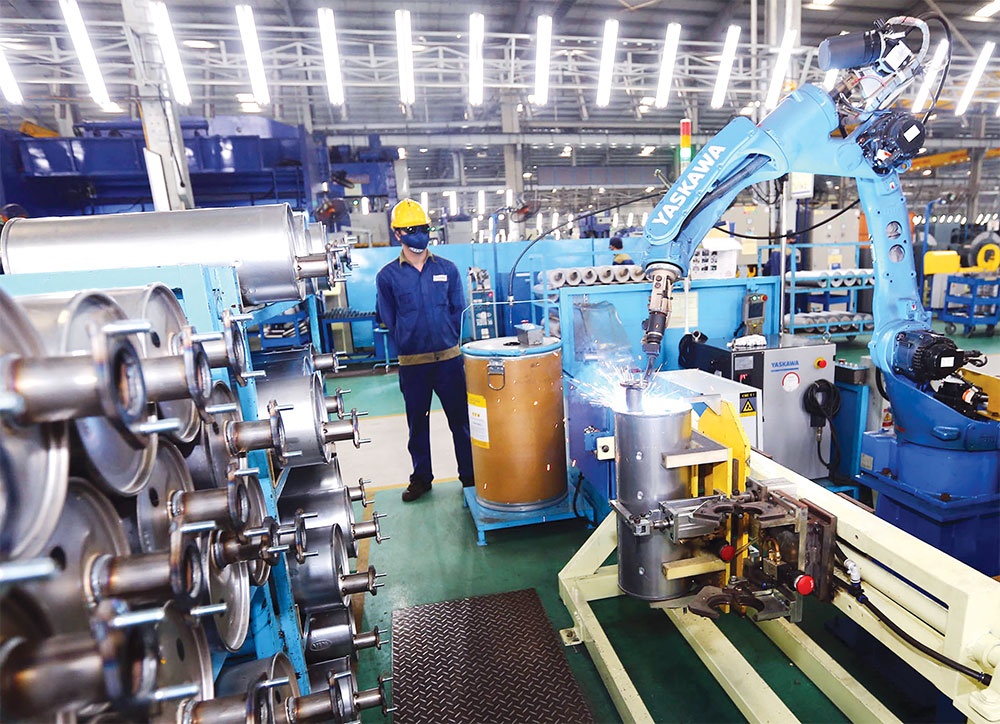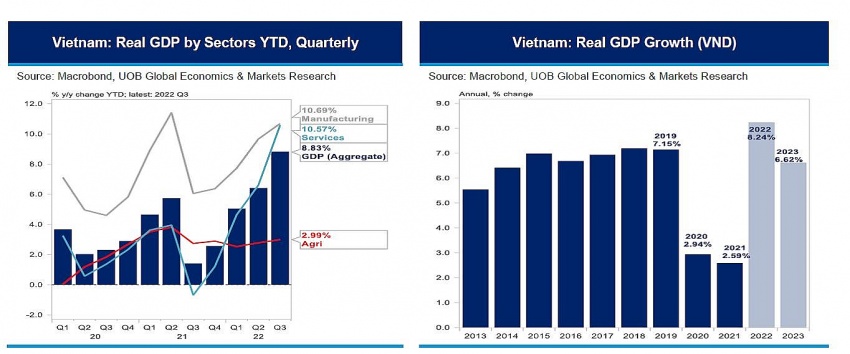Viet Nam's GDP projected at 7% in 2022: AMRO
Viet Nam's GDP projected at 7% in 2022: AMRO
The ASEAN+3 Macroeconomic Research Office (AMRO) has joined many international organisations in revising up Viet Nam’s GDP growth this year thanks to the country’s strong performance since early this year and success in containing inflation.

In its quarterly update of the ASEAN+3 Regional Economic Outlook released on Thursday, Viet Nam’s economy is projected to expand by 7 per cent in 2022, up from 6.5 per cent in its July forecast and making it the second-highest gainer in the region this year after Malaysia with expected growth of 7.3 per cent.
Viet Nam’s GDP will likely slow down in the next year to 6.5 per cent, topping the region and followed by the Philippines at 6.3 per cent.
AMRO’s forecast followed recent moves by Moody’s, the World Bank (WB), the International Monetary Fund (IMF) and the Singapore-based United Overseas Bank (UOB) which forecast Viet Nam’s 2022 GDP will reach between 7 per cent and 8.5 per cent.
“Viet Nam is doing well,” said AMRO chief economist Hoe Ee Khor at the Thursday meeting.
Though attributing the high GDP growth partly to the low base from last year, Dr. Khor said the opening up of the economy, relaxation on pandemic control, increase in domestic demand, recovery in tourism and successful attraction of foreign direct investment (FDI) all contributed to Viet Nam’s quick recovery.
“On top of that, the Government’s policy is quite supportive this year. So, because of all these factors, we expect Viet Nam’s economy to grow strongly,” Khor said.
However, Khor pointed out an external risk of import inflation coming from high oil prices.
“I mentioned the Vietnamese Government has cut taxes to curb inflation, but that’s not sustainable or the switch you need to refer back to normal,” Khor said, adding the Government needs to start raising the policy rate to contain coming inflation.
For the first time in two years, the State Bank of Viet Nam (SBV) decided to raise its policy rates by one percentage point on September 23.
SBV’s move was deemed inevitable as the FED has been raising interest rates, subsequently putting pressure on exchange rates.
Khor also endorsed the Vietnamese central bank’s move, emphasising Viet Nam’s economy is already recovering very strongly and there’s no need for monetary stimulus at this point in time.
“The focus is shifting from supporting growth to containing inflation,” he said.
Viet Nam’s inflation is expected to reach 3.5 per cent this year and drop slightly to 3.3 per cent in 2023.
This year, most countries are forecast to see their inflation surpass their targets but in the case of mainland China, Hong Kong and Viet Nam, the expected inflation by year-end will be under the ceiling target.
Regional outlook
For the regional outlook, AMRO revised downwards its short-term growth forecast for the ASEAN+3 region due to the continuing strict dynamic zero-COVID policy and real estate sector weakness in China and potential recessions in the United States and the euro area.
The ASEAN+3 region (ASEAN plus China, Japan and the Republic of Korea) is expected to grow by 3.7 per cent this year – down from the 4.3 per cent growth projected in the July forecast.
China’s growth was revised down to 3.8 per cent in 2022 from 4.8 per cent in the previous forecast. Japan and Korea’s GDP were projected at 1.6 per cent and 2.4 per cent, respectively.
The ASEAN region alone is slated to grow strongly by 5.3 per cent. The region’s inflation rate for 2022 is now projected to be 6.2 per cent – a full percentage point higher than previously forecast. Growth is expected to increase to 4.6 per cent in 2023 as China’s economy picks up, with inflation moderating to about 3.4 per cent.
The prolonged war in Ukraine is deepening Europe’s energy crisis, pushing it closer to recession. In the United States, aggressive monetary tightening to fight persistently high inflation is intensifying fears of a hard landing.
“A simultaneous economic slowdown in the United States and euro area, in conjunction with tightening global financial conditions, would have negative spillover effects for the region through trade and financial channels,” Khor said.
In ASEAN+3, inflation is accelerating. Food and fuel prices remain elevated despite recent easing in key global commodity benchmarks. Subsidy cuts in some economies and depreciating currencies have also pushed prices higher.
“Central banks in the region are raising policy interest rates to safeguard price stability and support their currencies. However, the pace of monetary tightening has generally been more measured and gradual than in the United States and the euro area,” Khor said.



















